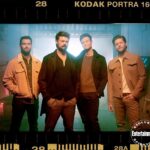
When I returned to Vancouver in the late 1980s, biking in the city was different than it is today. In my memory, the only people brave enough to ride downtown were bike couriers. On sunny afternoons there would be a dozen of them lounging and smoking outside the HSBC bank building on West Georgia Street, waiting for their next sortie, looking bored and skeptical, outlaws every one.
Mere civilians, like me, were discovering mountain bikes around this time because you could ride them on trails, which is to say, safely distant from the at-times murderous urban traffic.
All that has changed. Bike couriers fell to technology. Vancouver set out to become a “green city,” and we now have a network of protected bike lanes throughout the downtown core as a result. Commuting to work, or even just casually biking about, is now no longer a life-and-limb undertaking.
Meanwhile, back in 2015, the city also completed the last extension of the sea wall with separated bike and pedestrian lanes. You can now travel its length, with little elevation change, from the Vancouver Convention Center on the north side of downtown, around Stanley Park, along the north and south banks of False Creek, and finally, all the way west to the vast sandy beaches at Spanish Banks. There, in late spring and early summer — particularly on crowd-free weekdays — bald eagles can be seen wheeling in pairs in the updrafts over the anchored freighters.
The short route
Canada Place to Denman Street
I love the sea wall. But then, a lot of us do here. We stroll it. We bike it. We crowd the community squares along its length in any remotely nice weather. Asked how a visitor can really see this place on a short visit, that’s what I’d say: Rent some wheels and hit the sea wall. There’s no better way to take in Vancouver from so many angles while accessing a range of local tastes and experiences as you go. And with bike and e-bike rental shops throughout the downtown core, it couldn’t be easier.
From Canada Place, the cruise-ship port in downtown Vancouver, the most compact version of the sea wall ride would be to ride it all the way around Stanley Park, the 1,000-acre, densely forested public park that extends westward from downtown and is arguably the crown jewel of the city. Weave your way through the buskers and conventioneers near Canada Place and pick up the bike path at the southwest corner of the Vancouver Convention Center. From the north side of the building you’ll get a great view of the working harbor: orange cranes towering over their quilt-work stacks of containers; ferries crossing the inlet to North Vancouver; the low roar of floatplanes taking off and heading west through the uprights of the Lions Gate Bridge.
It’s only a few minutes ride from here to the park, winding around the Coal Harbour Marina with its enormous yachts, then the Westin Bayshore. Expect foot and bike traffic. But past the red-and-white lighthouse at Brockton Point the traffic thins out. I find it serene gliding along this stretch, Stanley Park’s forest rising high on one side and those towering mountains right there across the inlet.
Once around the corner under the Lions Gate, car traffic booming high overhead, stop to take in the seabirds, fishermen throwing lines off the rocks, sailboats tacking and reaching their way among the anchored freighters.
At a leisurely pace, which I encourage, it takes about 40 minutes to reach English Bay from where you started at Canada Place. I always hop off the sea wall here to dive into the dense vibrancy of Vancouver’s West End. Like many others, I used to rent down here. And if you stop for a drink at the Sylvia Hotel bar, or head up Denman Street for coffee at Delany’s, or for five pork dumplings in beef broth at Legendary Noodle, you might just think of yourself as an honorary West Ender as well.
To complete this short ride, leave the sea wall now and continue north on Denman Street. You could walk your bike for this stretch as the street life is its own entertainment. When you reach the water at the north end of Denman you’ll rejoin the sea wall and can then follow it back to Canada Place.
The moderate route
Canada Place to Granville Island
For a longer ride, about 90 minutes round trip, remain on the sea wall and carry on past English Bay, under the Art Deco-style Burrard Street Bridge, and into False Creek. Here you will find a very different set of Vancouver scenes and moments.
Home to sawmills and lumber yards as recently as my own childhood, False Creek is now a residential zone with waterside condos, shops, restaurants, parks and more big yachts in the marinas along the north side of the creek. I always stop to look at the smaller boats anchored for free: liveaboards, which, combined with those bathtub ferries taking people back and forth for shopping on Granville Island, give False Creek a pleasingly lived-in feel.
I turn this into a picnic when I’m down here with friends and family. There are excellent restaurants blocks off the water in the chic converted warehouse district of Yaletown. But 15 minutes past English Bay as far as the foot of Davie Street, you can pick up a more casual lunch of pancetta and onion pizza at the Sciué Italian Bakery or a bento box from the upscale grocer Urban Fare. Eat on the benches that line the water or in David Lam Park, where you can listen to kids in the playgrounds, and watch the bridal parties taking photographs under the cherry blossoms.
Only 10 minutes farther on the sea wall, around the end of False Creek, past the geodesic dome of Science World, you’ll find the public square in Olympic Village. You’ll know you’re there when you see “The Birds” sculpture: two house sparrows just under 20 feet tall. If you’ve waited for lunch, this is prime food truck territory, but a peach and rosemary tart and a coffee from Terra Breads cafe has never failed to hit the mark either. After lunch, wander down to the water, lean on the railing and watch the dragon boats, 20 paddlers each, churning the water to a white wake.
Following the signs for the sea wall bike route, you’ll soon roll into Granville Island. It’s a big attraction, so expect crowds. But it’s a local place, too. When I lived closer, I shopped at the public market here almost every day. Even now I’ll stop to say hello to the folks at Tenderland Meats, or watch the fishmongers breaking down salmon. You can also wander down the island’s lanes to see glassblowers at work. Popina at the tip of the pier is your spot for everything from falafels to Nashville hot chicken, lobster rolls to crispy cod sandwiches. To complete this 90-minute ride, take the bike-friendly Aquabus on the far side of the market and it will be under 15 minutes back to Canada Place via protected bike routes.
The long route
Canada Place to Spanish Banks
You’ll have seen a lot of the city by now. But as a local, I would consider one stop still outstanding. This is the longest version of the sea wall ride and would take a little over two hours in total from Canada Place to Spanish Banks and back. Continue west from Granville Island, around Vanier Park, past the Vancouver Maritime Museum. Pause to look at the heritage boats moored at Elsje Point. I like the red-sailed Anja in particular, a Bristol Bay Cutter, the ancestor design of modern racing yachts. Continue past Kitsilano Beach park, down West Point Grey Road, and around the corner at the Jericho Sailing Center, where kids learn the ropes on their 420s and Lasers. Here Spanish Banks opens up ahead: a wide stripe of grassy shore and sandy beach that scallops its way westward.
On summer weekends the area buzzes with family barbecues, volleyball games on the sand. But for me, the day of the week matters much less than the tides. I time my visit to Spanish Banks for the lowest low, when the sea pulls back dramatically, exposing hundreds of meters of sand along a two-kilometer stretch of beach.
You’ll want beach shoes. There are tidal pools. With your bike locked up, head out onto the sand flats. The dogs will chase Frisbees up and down. The gulls will scream and dive. The eagles will circle and soar. And if you walk out close to the lip of the sands, the freighters will seem almost close enough to touch.
I’ll invariably turn and face the city at this point. I’ll note the dense green shoulder of Stanley Park, the West End towers rising and bristling, the crystal glass constellation of downtown and False Creek towers, all seemingly silent and still from this distance, a seam of life pinned in place between the dome of eggshell sky above, the steel blue ocean below.
Here is the city’s best angle, I submit. Vancouver in a single macro-glimpse. Well worth the journey for a newcomer. Even for this lifer, an eye-opener every time.
Timothy Taylor is a novelist and journalist. His latest work is a novel about the rise and fall of a celebrity chef. Mr. Taylor lives and eats in Vancouver.




